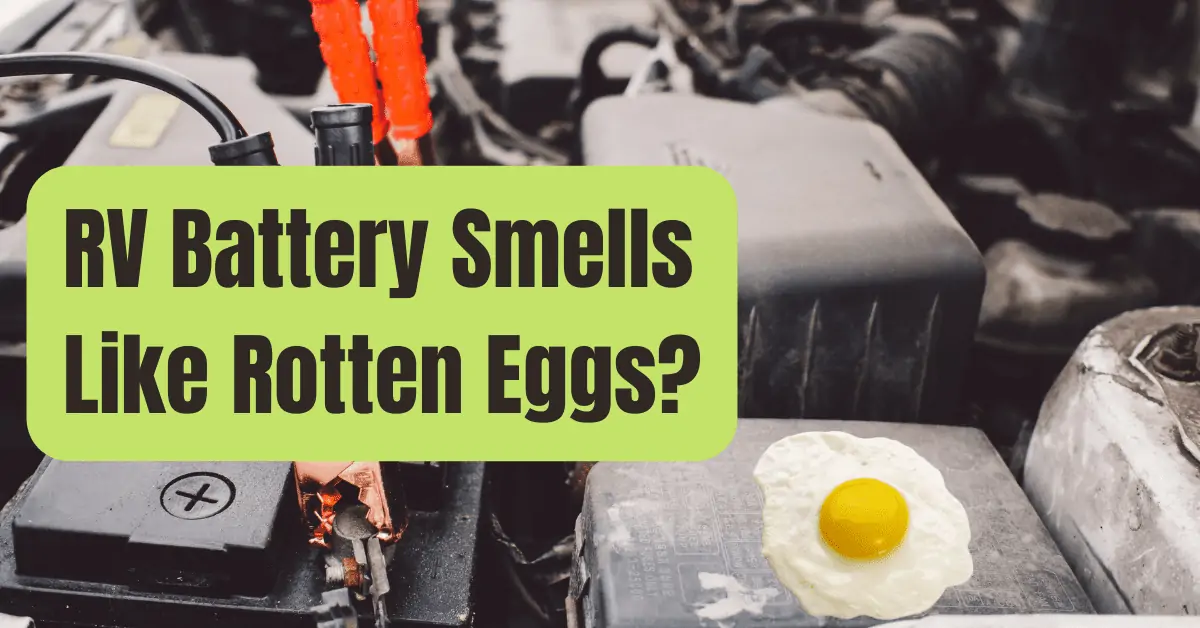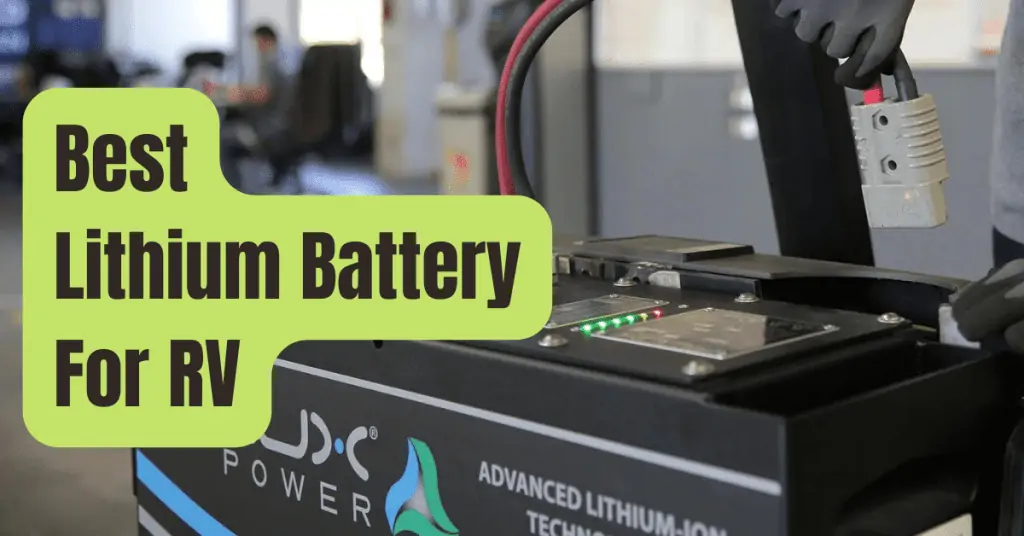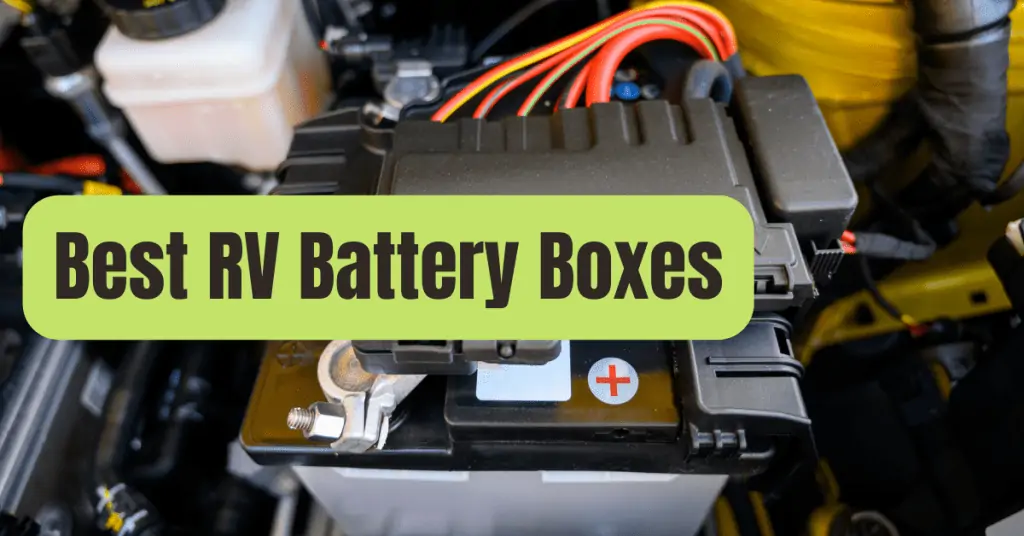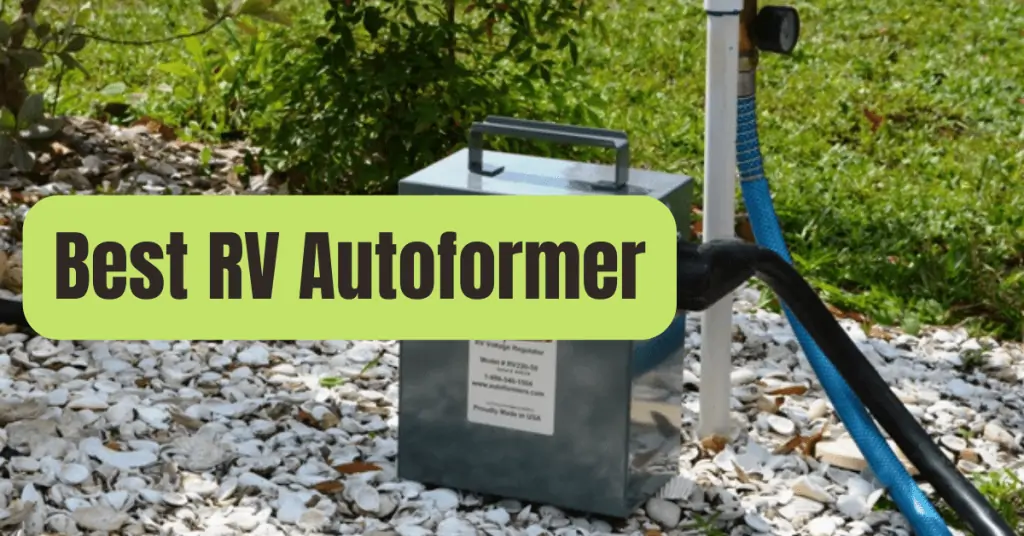Let me venture a guess.
You connected your 12-volt battery to a charger you had hidden in your garage, and after an hour you could only smell rotting eggs?
Yes, charging a 12-volt or other lead acid battery has put us all in that situation before.
They can all smell like an Easter egg that was never discovered, including automobile batteries, golf cart batteries, marine batteries, forklift batteries, and lawn mower batteries.
What causes the rotten egg smell coming from your vehicle battery or any lead acid battery?
A battery’s rotten egg odor is often caused by hydrogen sulfide, which is released when a battery is overcharged.
In sufficient amounts, this may potentially be fatal and irritate the sinuses and throat.
The most typical cause of this odor is a large charger.
Here are the top 5 causes of rotten egg smell coming from your battery.
| Reason for Rotten Egg Smell | Why it’s Happening | What to Do |
| Battery charger that is too large | Heat and fumes are emitted when current through the battery exceeds its capacity to convert it. | Switch to a charger with less amps, observing the 10% amp rule |
| Equalization mode for the charger | Charger intentionally raises the voltage, causing a controlled overcharge that releases heat and fumes. | If you want to use a charger with this function, choose one without it (or one that requires manual switching), or place your battery somewhere with good airflow. |
| Charger is broken | Heat and fumes are emitted when current through the battery exceeds its capacity to convert it. | Change the charger |
| Using an Antiquated, Non – Microprocessor Controlled Charger | Heat and gasses are emitted when the battery is fully charged because the amount of current flowing through it exceeds the battery’s capacity to convert it. | Upgrade to a contemporary, microprocessor-controlled, three- or four-stage smart charger or set a timer. |
| Internal battery short or a bad cell | During usage, charging, or even simply sitting still, the battery’s lead plates are shorting out, releasing heat and fumes. | If a flooded battery has more than one defective cell, verify each one’s specific gravity and replace the battery. |
Why Does My Battery Have a Rotten Egg Smell?
A battery will smell like rotten eggs when it is overcharged because extra electrical current breaks down liquid sulfuric acid (H2SO4) and releases hydrogen sulfide (H2S).
The smell of hydrogen sulfide is similar to that of sulfur or rotten eggs.
Usually, this is all caused by either too much voltage or too much amperage being applied to the battery (via an excessively large charger) (the charger is in equalization mode).
However, it may occur when there is an internal short, a bad battery, or an outdated, non-microprocessor controlled charger is being used.
These older chargers just pump out electricity without ever checking the battery’s capacity or even if it is completely charged.
Batteries essentially transform the electrical energy from your charger into chemical energy that is stored.
The level of charge in your battery at this precise instant determines how much electrical energy it can convert.
In essence, it follows the rule of decreasing returns.
Your battery can take and convert electricity like crazy up to roughly 80% when it is 20% charged.
After then, its conversion rate starts to decline until it reaches roughly 90%, at which point it further declines.
The more challenging it is to actually charge your battery, the closer it comes to being completely charged.
If a battery is overcharged and liquid sulfuric acid (H2SO4) is broken down, the battery will smell like rotten eggs.
Hydrogen sulfide (H2S) is released as a result of the excessive electrical current.
The smell of hydrogen sulfide is similar to that of sulfur or rotten eggs.
It’s comparable to fully inflating a balloon WITHOUT exploding it.
The first 80% may be filled with ease.
As you get closer to 100%, you start to slow down even more.
Additionally, the balloon is now blowing air your way.
This would be more internal resistance for the battery as it charged.
The battery MUST do something with the extra power if you use it faster than it can convert electrical energy into chemical energy stored in the battery.
This is the location of electrolysis.
Heat is produced and water and sulfuric acid molecules in your electrolyte are really destroyed by excess voltage that cannot be converted.
Evaporation results from this heat.
You may smell the rotten eggs because of the production of water vapor and hydrogen sulfide during evaporation.
Since everything will be mixed if the overcharge is little and you have a sealed lead-acid battery, you probably won’t even notice an issue.
Flooded lead-acid batteries make it much simpler to detect overcharging problems.
Even sealed batteries include a pressure release valve, however, in case the overcharge is too great and they continue to smell like rotten eggs.
Is the Battery’s Rotten Egg Smell Dangerous?
When present in sufficient quantities and with little air, the rotten egg smell from a battery is hazardous.
The gas hydrogen sulfide, which gives off the rotten egg odor, may be very irritating to the throat and sinuses and potentially fatal if it is concentrated to a dangerous level and there is inadequate ventilation.
When I first started creating my own battery banks, I was utilizing a charger that was too big for my specific arrangement.
Excessive heat and hydrogen sulfide were being emitted as a result of this.
Unfortunately, you quickly get “nose-blind” from it.
I spent about 20 minutes in my basement researching what to do and checking to see if it was common before I ultimately disconnected everything and went outside.
For days thereafter, the inside of my sinuses and throat both felt really raw.
There Are 5 Typical Causes Of Battery Overheating And Rotten Egg Odor.
#1. Extra-Large Charger
You should get a new charger if your current one is too large.
It’s wise to adhere to the 10 percent guideline as a general rule.
Purchase a charger with an amp rating that is 10% or less of the total amp hour (AH) rating of your battery.
Therefore, a 50AH battery would need a 5amp charger, for example.
An excessively powerful charger will provide more amps than the battery can use, which will cause the electrolyte to evaporate away and produce too much heat.
However, the 10 percent guideline is a good one to live by.
In my experience, you may sometimes get away with a charger that has an amp rating that is 15-20% of the battery’s entire AH rating.
You may go to my other page here where I have calculators that you can use that will give you approximations if your battery is a SLA or starting battery (vehicle, lawn mower, etc.) and does not have an AH rating.
Just be prudent and average the results if several calculators give you different results.
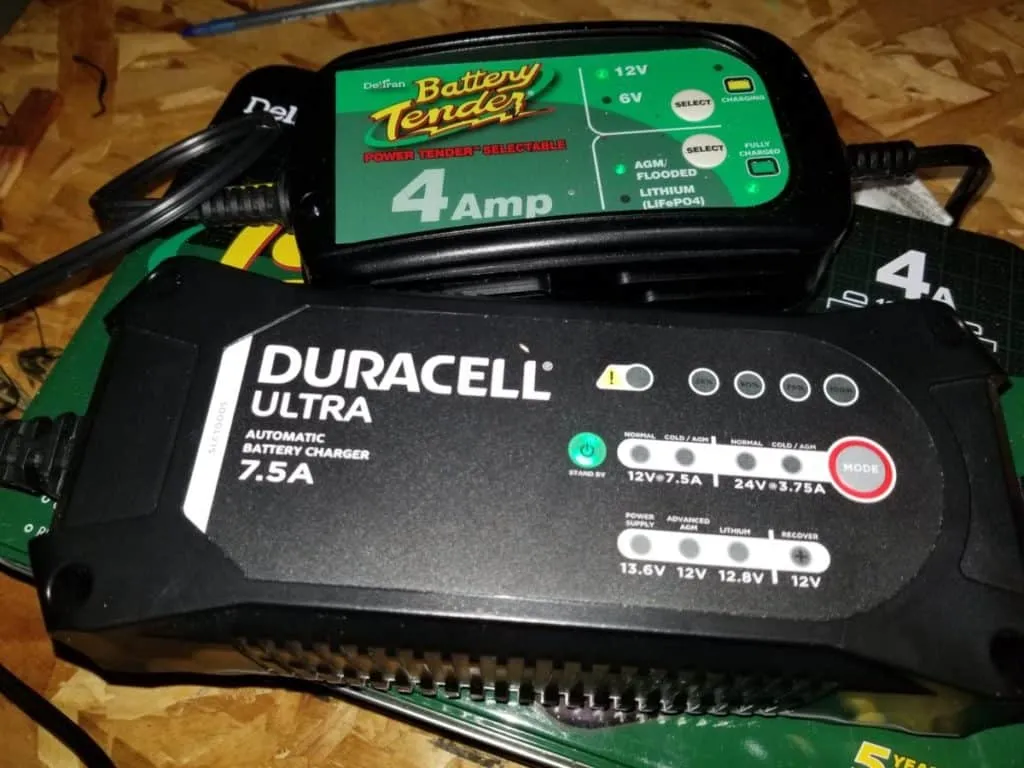
#2. Mode of Desulfation
The rotten egg stench is really typical if your battery charger is on equalization/maintenance/desulfation mode.
To remove any lead sulfate crystals that have begun to coat the lead plates in your battery, a charger will perform a “controlled overcharge” of your battery during desulfation mode by raising the voltage to 16+.
Others chargers do this automatically, some need you to press a button, and some feature unique technology that desulfates while the device is being charged normally.
Since I want to be informed of when my battery will be generating a hazardous gas, I prefer a charger that won’t desulfate it automatically.
For your charging requirements, I strongly suggest Deltran Battery chargers.
I’ve been using their goods every day without a problem or the rotten egg smell for the last seven years.
They provide a gentle charge, maintain your battery’s desulfurization throughout charging, and operate in float modes WITHOUT the significant voltage spikes that give off the rotten-egg stench.
The models I recommend for your specific battery are listed below.
| Battery Application | Recommended “Trickle Charger” Amp Range | Recommended “Trickle Chargers” (Amazon) |
|---|---|---|
| Car | 2-4 Amps | 2-Amp Noco Genius® 4-Amp Battery Tender® |
| Boat (Marine) | 2-5 Amps | 4-Amp Battery Tender® 5-Amp Noco Genius® |
| Lawn Tractor, Motorcycle, ATV | 750mA – 1.25 Amps | 750mA Battery Tender® 1.25-Amp Battery Tender® (12 or 6 volts) 2-Amp Noco Genius® |
| Golf Cart (6-Volt) | 2-4 Amps | 2-Bank, 4-Amp (2 per bank) 6 or 12 Volt Noco Genius® You can hook up 2 x 6 volt batteries on each bank, or use the 12-volt setting if you have 2 x 6-volt batteries hooked in series 4-Amp Battery Tender® |
#3. Malfunctioning Charger
The only sensible course of action is to throw away your charger and get a new one if you think it could be performing strangely.
Any of the aforementioned models would be wonderful selections!
#4. No Microprocessor Control Over The Charger
Older chargers didn’t have microprocessor control.
They essentially didn’t care what the battery could or couldn’t receive and convert; they just emitted a given current at a defined voltage.
If the battery was fully charged, the charger would continue to pump current.
Naturally, this would cause the battery to overcharge and create heat, which would cause hydrogen sulfide to be released and cause you to smell rotten eggs.
Any charger available today will be a microprocessor-controlled, three- or four-stage charger that will monitor what the battery can take and convert.
When the battery is completely charged, the charger will go into “float mode” and remain in that state.
Personally, I avoid battery chargers that include the warning, “Do not overcharge battery.”
That suggests that when the battery is completely charged, it won’t switch to float mode.
Overcharging, overheating, and a rotten egg odor will result from this.
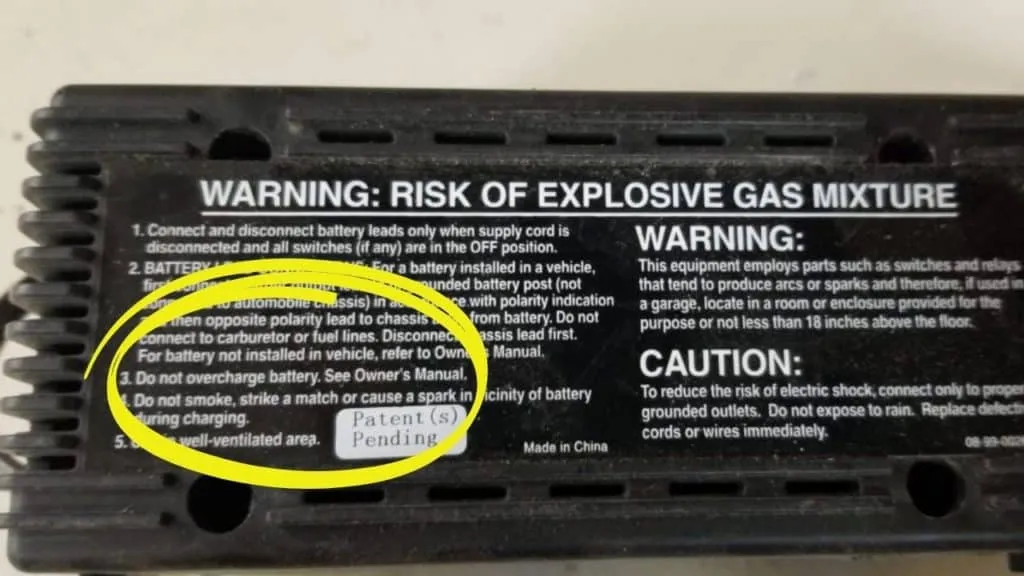
#5. Bad Or Internal Short Cells
When a battery has an internal short, lead plates that ought to be separated by electrolyte are contacting each other within the battery.
This may occur as a result of an accident, dropping the battery, or physically jarring it in some other manner.
While this occurs, your battery will produce too much heat while being charged, while being used, and sometimes even when it is simply sitting there.
Even with a charger that is the right size, overcharging might still be an issue if you have a faulty cell for any reason.
It can take a smart charger a little while to realize that a battery has a defective cell, but it should be able to tell.
You could be smelling that rotten egg odor in the meanwhile.
For example, a 12-volt battery is completely charged at roughly 12.65 volts.
There are six cells, and each one should be about 2.1 volts (give or take).
The battery charger’s objective is to raise the battery’s TOTAL voltage to 12.65 volts.
The other cells will be overloaded to make up for a faulty cell that won’t retain a charge, say one that is defective and is, let’s say, 1.25 volts.
The 5 cells would have a greater charge than ideal to do that and make up for the damaged cell, but the battery might still read 12.65 (temporarily) and look completely charged.
As heat is generated by the extra voltage, these 5 cells will leak hydrogen sulfide gas while they are being overcharged.
Here, your only choice is to use a hydrometer to measure each cell’s specific gravity and determine if you have a faulty cell.
A sealed battery cannot be used for this; only flooded batteries with removable caps may be used.
You must replace the battery if one or more of the cells are faulty.
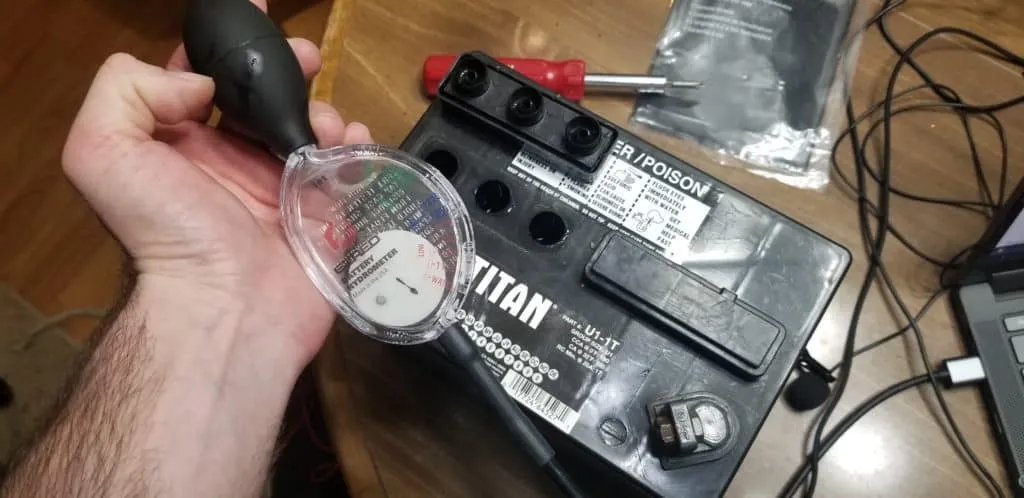
What Do I Do If My Battery Has a Rotten Egg Smell?
When your battery smells like rotten eggs, it is recommended to check the voltage using a voltmeter or multimeter, and then disconnect it afterwards.
You may be able to tell what was going on by looking at the voltage.
If your voltage was around 14.5, it’s likely that your charger’s amperage is too high and you need to use one with lower amps.
There is a fair likelihood that your charger was in the desulfation/equalization/maintenance mode and is carrying out a “managed overcharge” if your voltage is high (15 or 16+).
This might take 4–10 hours, depending on the charger’s manufacturer.
Check out the links to the chargers in the table above if you are unimpressed with how your charger conducts an automated desulfation mode.
Monitor your electrolyte levels if you have a flooded battery and cautiously add distilled water as necessary.
The level should be between 1/8″ and 1/4″ below the fill tubes’ bottoms.
If your battery is sealed, you cannot replenish any electrolyte that evaporates and is lost.
Low-grade overcharges won’t do much damage to the battery because it can recombine the electrolyte (it’s sealed, sort of); however, if you can smell rotten eggs coming from a sealed battery, you’ve gone over the pressure tolerances of the battery and it is now off-gassing as a result of the heat buildup.
Any evaporating gases cannot be reintroduced, as I already said.
With sealed batteries and overcharging, use extra caution.
How Can I Keep My Battery From Ever Smelling Like Rotten Eggs?
Use a charger that is the right size, avoid desulfating your battery, and use a new 3- or 4-stage smart charger to avoid batteries smelling like rotten eggs.

